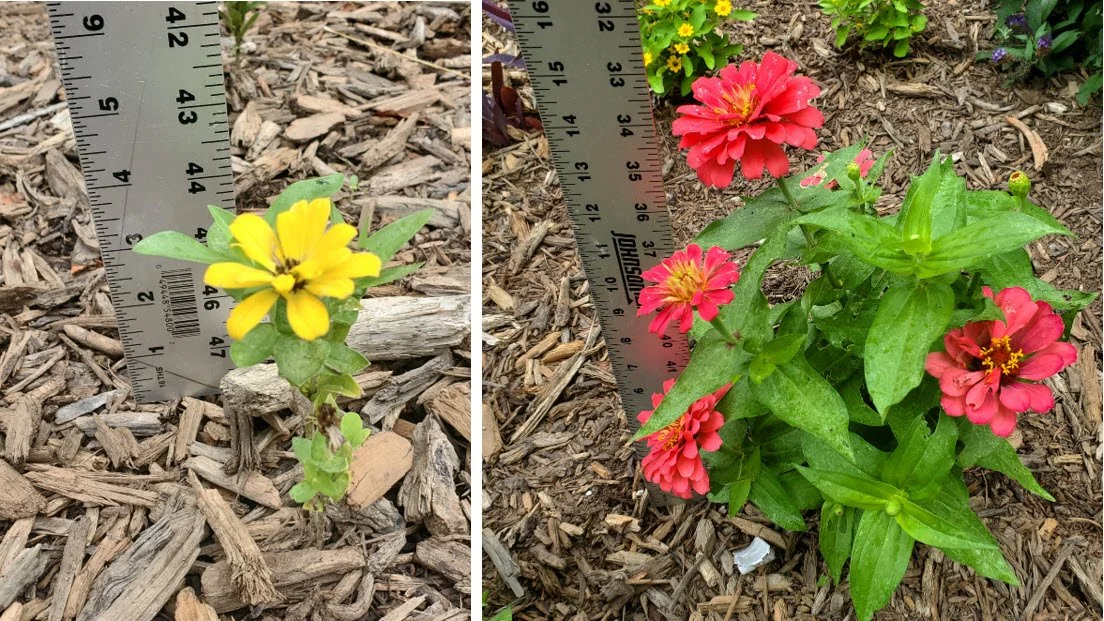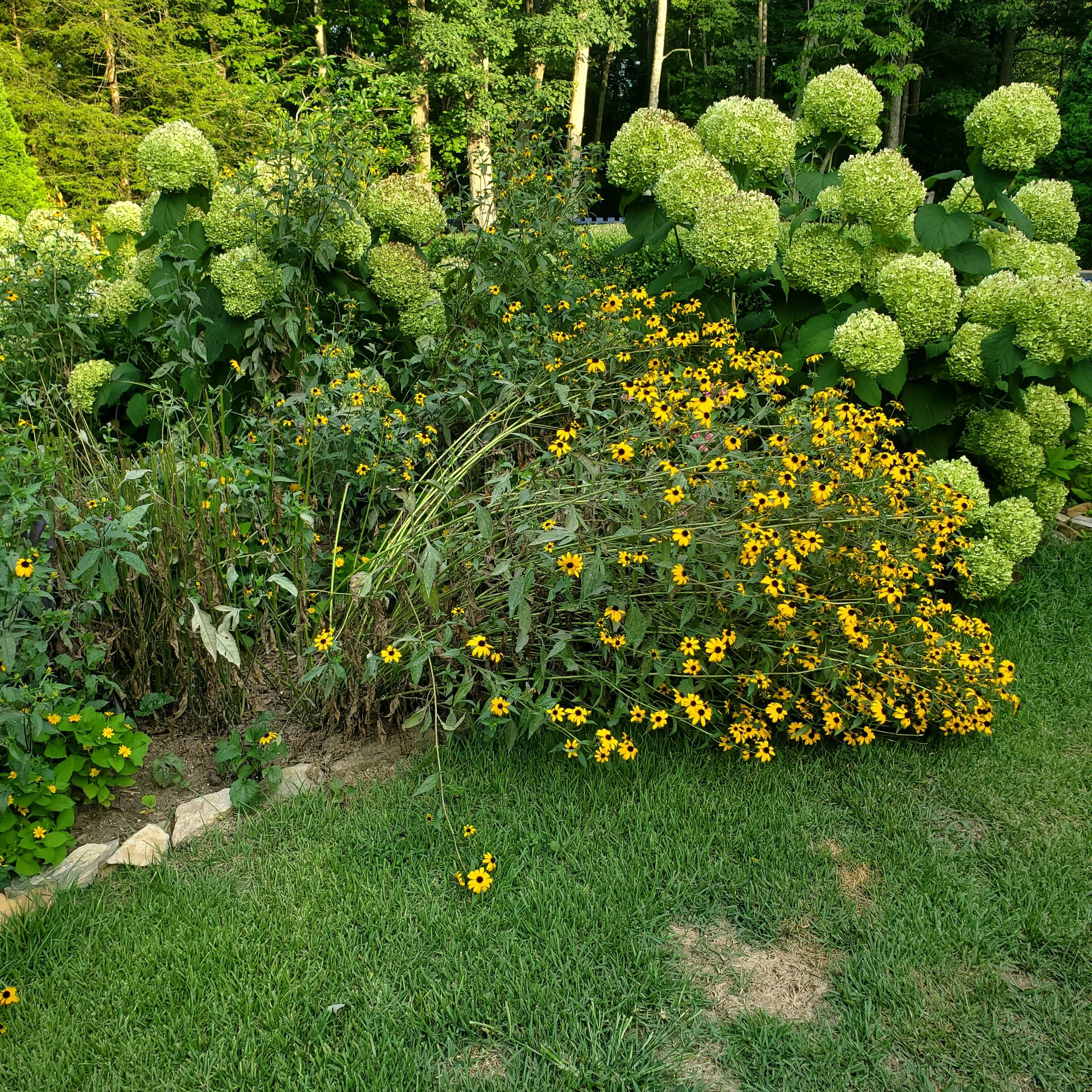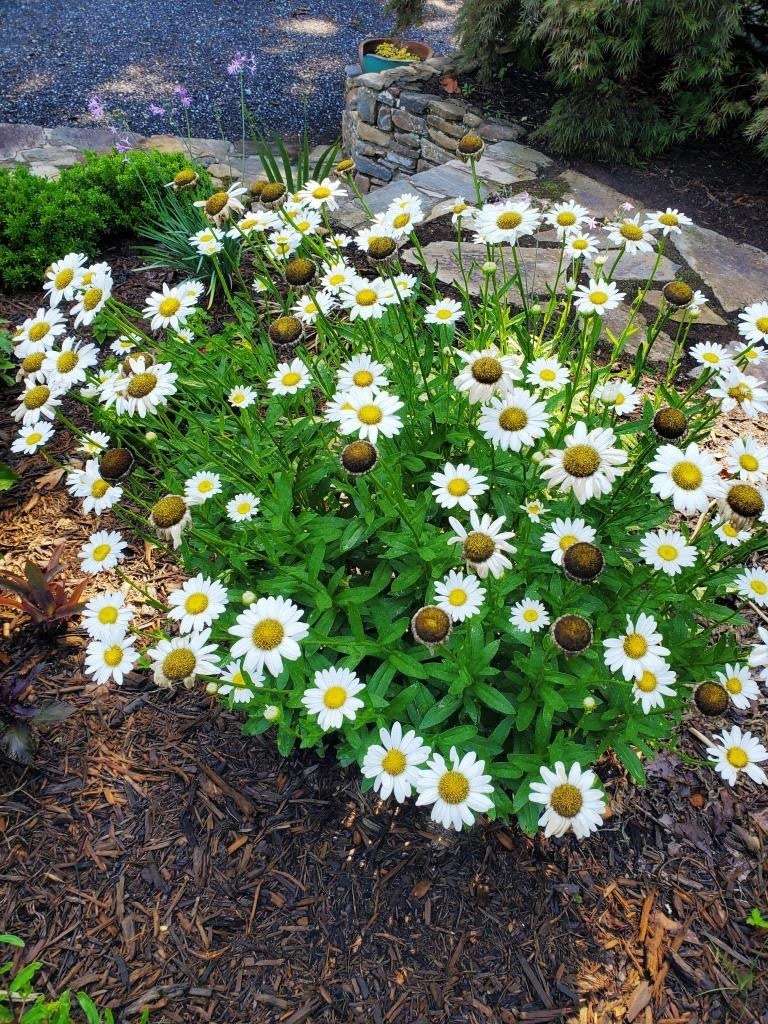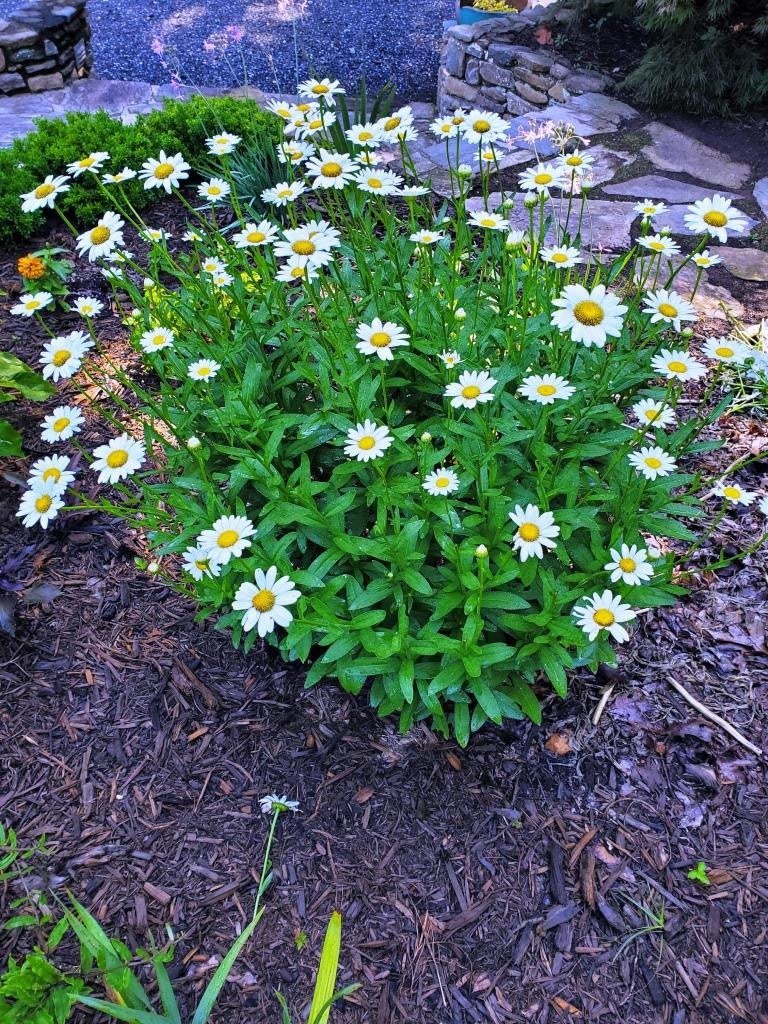If you have ever wondered about whether soil preparation was really critical, or if that was just an “in a perfect world” condition, let me share my personal experiences. This spring, I started a new planting bed in an area that had been compacted by construction equipment. In some areas, I carefully dug and amended before planting. Other areas (I got tired and impatient), I just chiseled holes in the sticky red clay of upstate SC and plopped in seedlings. Thankfully, the holes of shrubs and perennials were all loosened and amended. The annuals did not receive the same care because, well, they are annuals.
Here are three examples demonstrating the difference that soil preparation can make. I have not fertilized the plants in these photographs.
Seedlings of the puny trio of Melampodium on the left were placed into unprepared soil three months ago. The trio on the right was installed in loosened and amended soil. They are twenty-two inches tall. These plants came from the same package of seed, were installed the same day, and are only a few feet apart, so they get the same sun exposure.
These Gomphrena seedlings were started from the same seed pack and placed in the ground the same day, three months ago. The plant on the left was placed into unprepared soil. It is five inches tall. The plant on the right was placed into soil amended with a shovelful of soil conditioner. It is twenty-two inches tall. These plants are in the same bed, a few feet apart.
Just like the examples above, these Zinnias were started from the same seed pack and seedlings were planted out the same day, only a few feet apart. The one on the left, placed in unamended soil, is a single stem, four inches in height. The one on the right, planted into amended soil, is well-branched and fifteen inches tall. I feel guilty every time I see the runts.
The final photograph, below, shows what happens when maintenance is ignored. Certain tall plants are prone to “spraddling” later in the season, especially after a hard rain. In early spring, I tip-pruned my Mexican Salvia and Joe Pye Weed. They branched obligingly, and are about two-thirds the height they would have been without the cutback. Joe Pye flowers are starting to open, and the Mexican Salvia will flower in another six weeks or so. I neglected to cut back the Brown-Eyed Susans (Rudbeckia triloba) and last week a thunderstorm took the flowers to the ground, where they remained. I was forced to cut plants back to about a foot. They will recover and produce a few late flowers, but I lost the exuberant show and strong stems that an early cutback would have produced.
These Brown-Eyed Susans were forty inches tall, in full bloom. Then the rain came, and down they went.
The message of this blog: Take whatever time is necessary to properly prepare soil before installing plants. Heavy clay can be improved with soil conditioner, compost, or leaf mold. When you backfill the holes with amended soil, just firm it by hand enough to ensure good root-to-soil contact. There is no need to stamp it like you are angry with Mother Earth. Plant roots need oxygen to thrive.






